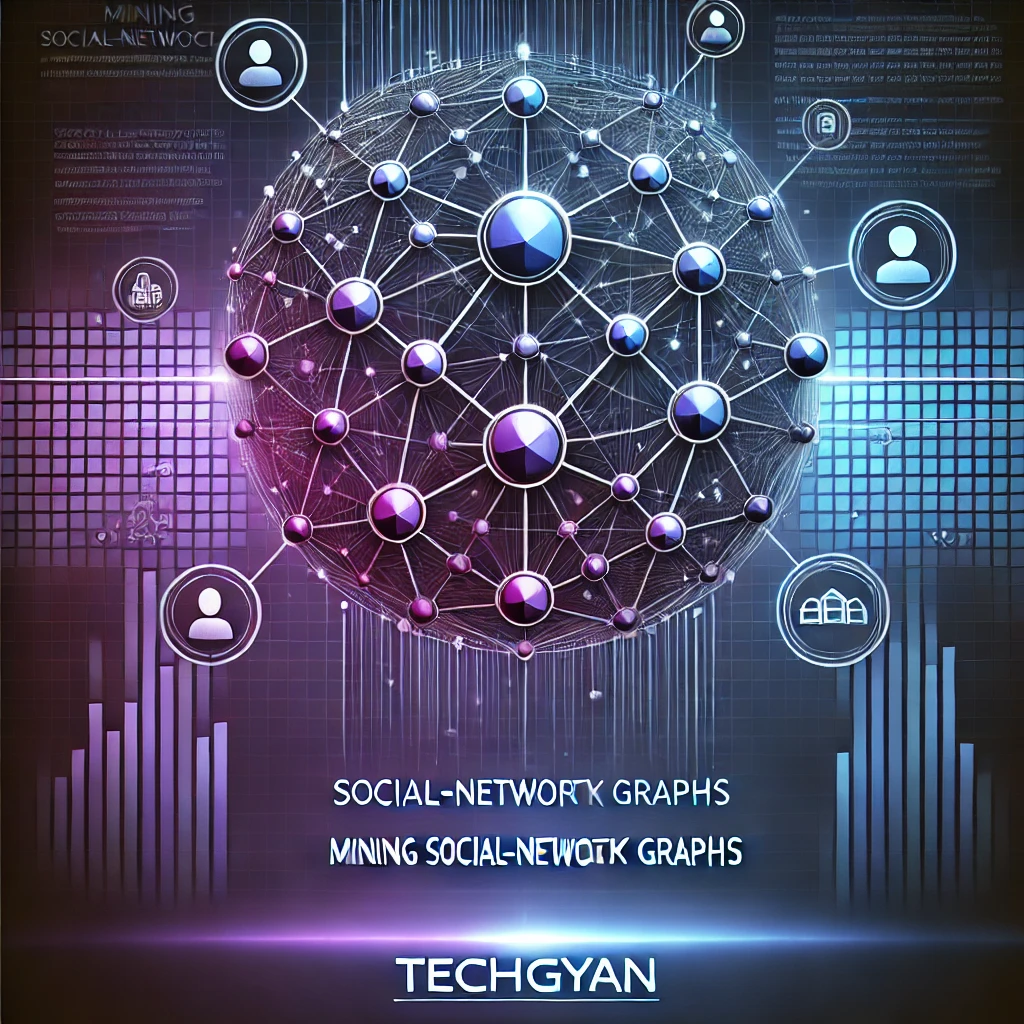Mining Social-Network Graphs: A Deep Dive into Community Structures
 techGyan : smart tech study
techGyan : smart tech study
What is a Social Network?
When we hear "social network," we often think of platforms like Facebook, Twitter, or Google+. These are examples of a larger category called social networks.
A social network has three key features:
A Group of Participants – The network includes a collection of entities, usually people, but sometimes other things.
Connections Between Participants – People in the network are linked by relationships. On platforms like Facebook, this means "friends." Some relationships are simple (either friends or not), while others have different levels (like family, close friends, or acquaintances).
Clusters of Relationships – Relationships are not random. If Person A knows both Person B and Person C, there’s a higher chance that B and C also know each other.
In short, social networks connect people (or things) based on relationships, forming patterns that aren’t random.
Social Networks as Graphs:
A social network can be shown as a graph, where:
Nodes (circles) = People or entities
Edges (lines) = Relationships or connections between them
Graphs can be:
Directed (one-way connection, like following someone on Twitter)
Undirected (mutual connection, like being Facebook friends)
Graphs help us understand how people connect, find important individuals, and analyze communication patterns.

Clustering of Graphs:
Clustering means grouping similar nodes in a social network based on their connections. It helps identify communities of users who interact more with each other.
Common Clustering Methods:
Hierarchical Clustering – Forms a tree-like structure by merging or splitting clusters step by step.
K-Means Clustering – Groups nodes into clusters based on similarity.
Spectral Clustering – Uses mathematical techniques to divide the network.
Modularity-Based Clustering – Finds strong, well-connected groups in the network.
These methods help in discovering user communities, influencer groups, and interaction patterns.

Direct Discovery of Communities in Graphs:
Community detection is a crucial aspect of social-network mining. Community detection algorithms include:
Girvan-Newman Algorithm: Iteratively removes edges with the highest betweenness.
Louvain Method: Maximizes modularity for large-scale networks.
Label Propagation Algorithm (LPA): Uses iterative label updates to form communities.
Infomap Algorithm: Uses information theory to reveal clusters.
These methods help in detecting hidden structures, identifying influential groups, and understanding how information spreads.

Partitioning of Graphs
Partitioning divides a graph into smaller subgraphs while minimizing edge cuts. Common techniques include:
Min-Cut and Max-Flow Algorithms: Used to identify minimal edges separating groups.
Spectral Partitioning: Leverages eigenvectors for balanced splitting.
Metis Algorithm: Fast multi-level partitioning suitable for large graphs.
Graph partitioning is essential in optimizing network structures, parallel computing, and efficient data storage.

Neighbourhood Properties in Graphs
Neighbourhood properties help analyze how nodes interact within their surroundings. Important measures include:
Degree Centrality: Number of direct connections a node has.
Clustering Coefficient: Measures local interconnectedness.
PageRank: Calculates node importance based on incoming links.
Betweenness and Closeness Centrality: Identify influential nodes.
These metrics are used in recommendation systems, viral marketing, and detecting anomalies in social networks.

Conclusion
Mining social-network graphs is a powerful technique that aids in understanding digital interactions, community formation, and information diffusion. Leveraging clustering, partitioning, and community detection methods allows businesses, researchers, and developers to extract meaningful insights from complex social structures.
Stay tuned with TechGyan for more insightful content on data science, machine learning, and graph analytics!
Subscribe to my newsletter
Read articles from techGyan : smart tech study directly inside your inbox. Subscribe to the newsletter, and don't miss out.
Written by

techGyan : smart tech study
techGyan : smart tech study
TechGyan is a YouTube channel dedicated to providing high-quality technical and coding-related content. The channel mainly focuses on Android development, along with other programming tutorials and tech insights to help learners enhance their skills. What TechGyan Offers? ✅ Android Development Tutorials 📱 ✅ Programming & Coding Lessons 💻 ✅ Tech Guides & Tips 🛠️ ✅ Problem-Solving & Debugging Help 🔍 ✅ Latest Trends in Technology 🚀 TechGyan aims to educate and inspire developers by delivering clear, well-structured, and practical coding knowledge for beginners and advanced learners.